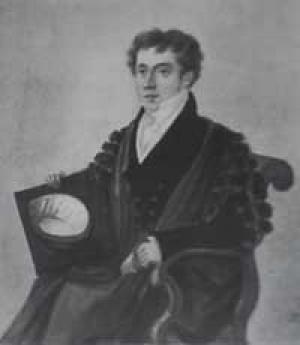Related Research Articles

Dame Kathleen Mary Kenyon, was a British archaeologist of Neolithic culture in the Fertile Crescent. She led excavations of Tell es-Sultan, the site of ancient Jericho, from 1952 to 1958, and has been called one of the most influential archaeologists of the 20th century. She was Principal of St Hugh's College, Oxford, from 1962 to 1973, having undertaken her own studies at Somerville College, Oxford.

Sir Robert Eric Mortimer Wheeler CH CIE MC TD was a British archaeologist and officer in the British Army. Over the course of his career, he served as Director of both the National Museum of Wales and London Museum, Director-General of the Archaeological Survey of India, and the founder and Honorary Director of the Institute of Archaeology in London, in addition to writing twenty-four books on archaeological subjects.

Jacquetta Hawkes was an English archaeologist and writer. She was the first woman to study the Archaeology & Anthropology degree course at the University of Cambridge. A specialist in prehistoric archaeology, she excavated Neanderthal remains at the Palaeolithic site of Mount Carmel with Yusra and Dorothy Garrod. She was a representative for the UK at UNESCO, and was curator of the "People of Britain" pavilion at the Festival of Britain.

John Robert Mortimer was an English corn-merchant and archaeologist who lived in Driffield, East Riding of Yorkshire.
Below are notable events in archaeology that occurred in 1890.
The year 2000 in archaeology included many events, some of which are listed below.

Sir Cyril Fred Fox was an English archaeologist and museum director.
The year 1976 in archaeology involved some significant events.
Below are notable events in archaeology that occurred in 1947.
The year 1954 in archaeology involved some significant events.
Below are notable events in archaeology that occurred in 1860.
John Bryan Ward-Perkins, was a British Classical architectural historian and archaeologist, and director of the British School at Rome.
Timothy William Potter was a archaeologist of ancient Italy, as well as of Roman Britain, best known for his focus on landscape archaeology.
Below are notable events in archaeology that occurred in 1951.

The Cambrian Archaeological Association was founded in 1846 to examine, preserve and illustrate the ancient monuments and remains of the history, language, manners, customs, arts and industries of Wales and the Welsh Marches and to educate the public in such matters. The association's activities include sponsoring lectures, field visits, and study tours; as well as publishing its journal, Archaeologia Cambrensis, and monographs. It also provides grants to support research and publications.

Charles Octavius Swinnerton Morgan DL, JP, FRS, FSA, known as Octavius Morgan, was a British politician, historian and antiquary. In 1840, in his capacity as a JP he served on the Grand Jury at Monmouth which found John Frost and his fellow Chartists guilty of high treason. He was a significant benefactor to the British Museum, in which there is a collection that is named after him. Vincent and Leopold (2015:3) observed: 'The protoacademic approach of nineteenth-century collectors, such as Octavius Morgan (1803–1888) and Augustus Wollaston Franks (1826–1897), was instrumental to the establishment and growth of some of the most comprehensive collections of horology, chief among them found in the British Museum, London.'

Tessa Wheeler was an archaeologist who made a significant contribution to excavation techniques and contributed to the setting up of major British archaeological institutions after the Second World War.
Mary Aylwin Cotton OBE, FSA, Hon FBA, known as Molly Cotton, was a British archaeologist and former doctor, noted for her work in Iron Age Britain - particularly hill forts - and Roman Italy. She trained archaeology students at the British School at Rome.

Audrey Williams was a Welsh archaeologist. She was the first woman president of the Royal Institution of South Wales (RISW) and a Fellow of the Society of Antiquaries. She worked on several notable excavations during the mid-20th century in Wales, London and south-east England, including the Gower Peninsula, Verulamium and the Temple of Mithras in London.

Modern archaeology is the discipline of archaeology which contributes to excavations.
References
- ↑ Frere, Sheppard (1949). "Canterbury Excavations, 1944–8". Antiquity . 23 (91): 153–160. doi:10.1017/S0003598X00020214. S2CID 161195637.
- ↑ Grummond, Nancy Thomson de (2015). Encyclopedia of the History of Classical Archaeology. Routledge. p. 801. ISBN 9781134268542.
- ↑ Murray, Tim; Evans, Christopher (2008). Histories of Archaeology: A Reader in the History of Archaeology. OUP Oxford. p. 225. ISBN 9780199550074.
- ↑ "Sir Mortimer Wheeler | British archaeologist". Encyclopedia Britannica. Retrieved 1 January 2019.
- ↑ "Dai Morgan Evans obituary". The Guardian. 17 April 2017. Retrieved 10 November 2017.
- ↑ Wallace-Hadrill, Andrew (9 August 2013). "Timothy William Potter (6 July 1944 – 11 January 2000)". Papers of the British School at Rome. 68: ix–xix. doi: 10.1017/S006824620000386X .